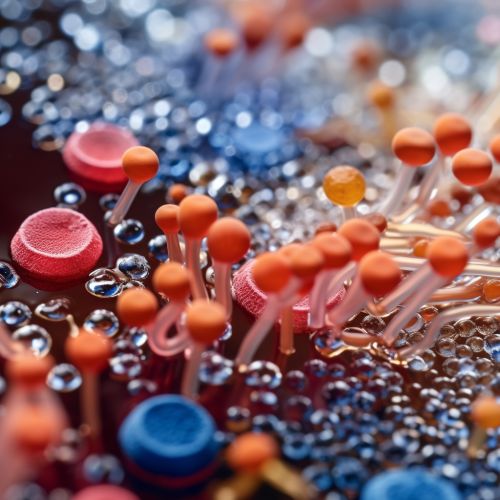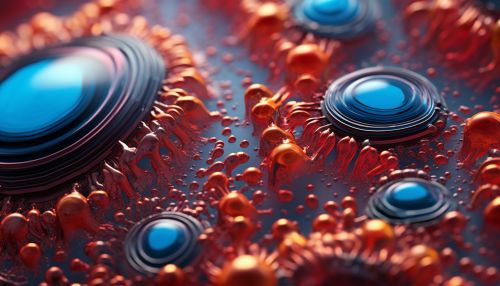Mechanisms of Biodegradation of Synthetic Polymers
Introduction
Biodegradation is a natural process that involves the breakdown of materials by microorganisms such as bacteria and fungi. Synthetic polymers, which are long-chain molecules created by humans, are often resistant to this process due to their complex structures and the absence of suitable enzymes in the microorganisms. However, under certain conditions, these polymers can undergo biodegradation, a process that is of significant interest due to the environmental impact of synthetic polymer waste. This article will explore the mechanisms of biodegradation of synthetic polymers in detail.


Synthetic Polymers and the Environment
Synthetic polymers, including plastics, are ubiquitous in our modern world. They are used in a wide range of applications, from packaging materials to automotive parts, due to their durability, light weight, and versatility. However, the environmental impact of synthetic polymers is a growing concern. Many of these materials are not biodegradable and can persist in the environment for hundreds of years, leading to pollution and harm to wildlife. Understanding the mechanisms of biodegradation of synthetic polymers is therefore crucial for developing strategies to mitigate the environmental impact of these materials.
Mechanisms of Biodegradation
The biodegradation of synthetic polymers involves several stages. The first is the colonization of the polymer surface by microorganisms. This is followed by the secretion of enzymes that can break down the polymer chains. The resulting smaller molecules are then metabolized by the microorganisms, producing carbon dioxide, water, and biomass.
Microbial Colonization
The first step in the biodegradation process is the colonization of the polymer surface by microorganisms. This is facilitated by the presence of nutrients and moisture, as well as the physical properties of the polymer, such as its surface roughness and porosity. The microorganisms attach to the polymer surface and form a biofilm, a community of microorganisms embedded in a matrix of extracellular polymeric substances.
Enzymatic Degradation
Once the microorganisms have colonized the polymer surface, they begin to secrete enzymes that can break down the polymer chains. These enzymes, known as depolymerases, cleave the polymer chains into smaller fragments. The specific enzymes involved in this process depend on the type of polymer and the microorganisms present. For example, the degradation of polyethylene, a common type of plastic, involves the action of several enzymes, including oxidases and peroxidases.
Metabolism of Degradation Products
The smaller fragments produced by enzymatic degradation are then metabolized by the microorganisms. This involves a series of biochemical reactions that convert the fragments into simpler compounds, such as carbon dioxide and water, which can be used by the microorganisms for growth and reproduction. This process is known as mineralization.
Factors Influencing Biodegradation
The rate and extent of biodegradation of synthetic polymers are influenced by several factors. These include the chemical structure of the polymer, the environmental conditions, and the types of microorganisms present.
Polymer Structure
The chemical structure of the polymer plays a crucial role in its biodegradability. Polymers with simpler structures and smaller molecular weights are generally more biodegradable than those with complex structures and high molecular weights. In addition, polymers that contain functional groups that can be targeted by microbial enzymes, such as ester or amide groups, are more susceptible to biodegradation.
Environmental Conditions
The environmental conditions, including temperature, pH, and the availability of nutrients and moisture, also affect the biodegradation process. Optimal conditions for biodegradation vary depending on the type of polymer and the microorganisms involved. However, in general, conditions that favor microbial growth and activity, such as warm temperatures and neutral pH, promote biodegradation.
Microbial Diversity
The diversity and activity of microorganisms in the environment also influence the biodegradation of synthetic polymers. Different microorganisms produce different enzymes and have different metabolic capabilities, which can affect the rate and extent of polymer degradation. In general, environments with a high diversity of microorganisms, such as soil and compost, are more conducive to biodegradation.
Conclusion
Understanding the mechanisms of biodegradation of synthetic polymers is crucial for addressing the environmental impact of these materials. While many synthetic polymers are resistant to biodegradation, research is ongoing to develop new materials that are more biodegradable, as well as strategies to enhance the biodegradation of existing materials. This includes the use of biodegradable additives, the design of polymers with structures that are more susceptible to microbial attack, and the use of genetically engineered microorganisms with enhanced degradation capabilities.
